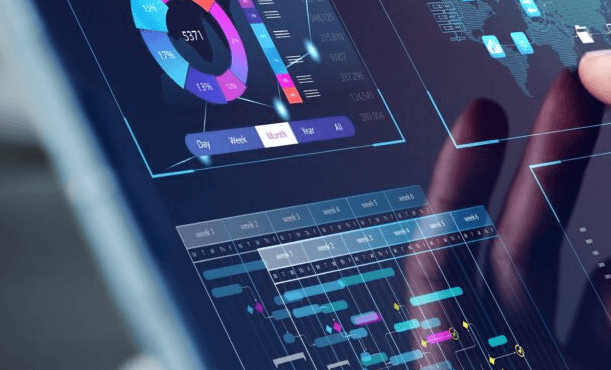Top Software Development Trends for 2024

As the digital world continues to evolve at a rapid pace, software development remains at the forefront of this transformation. In 2024, several trends are emerging that will not only influence how software is created but also how it is deployed, maintained, and experienced by users. This article delves into the most significant software development trends for 2024, offering insights into what developers, businesses, and tech enthusiasts can expect in the coming year.
The Rise of AI-Driven Development
Artificial Intelligence (AI) is no longer just a buzzword; it’s an integral part of modern software development. In 2024, AI-driven development tools are expected to take center stage, empowering developers with capabilities that were once unimaginable. AI can now write code, debug software, and even predict potential vulnerabilities before they become critical issues. This trend is not about replacing developers but augmenting their capabilities, allowing them to focus on more complex and creative tasks.
One of the key areas where AI is making a significant impact is in the automation of repetitive tasks. For instance, AI-powered code completion tools like GitHub Copilot are becoming more sophisticated, helping developers write code faster and with fewer errors. Furthermore, AI is being used to enhance testing procedures, identifying bugs and security flaws with greater accuracy and speed than traditional methods.
Low-Code and No-Code Development Platforms
The demand for faster software delivery has given rise to low-code and no-code development platforms. These platforms allow developers—and even non-developers—to create applications with minimal hand-coding, significantly reducing the time required to bring a product to market. In 2024, we can expect these platforms to become even more prevalent, as businesses look for ways to rapidly innovate and respond to market changes.
Low-code and no-code platforms are particularly beneficial for small and medium-sized enterprises (SMEs) that may not have extensive IT resources. These tools enable SMEs to develop custom applications tailored to their specific needs without the high costs associated with traditional software development. Additionally, as these platforms evolve, they are incorporating more advanced features such as AI integration, making them even more powerful.
The Growth of DevSecOps
Security has always been a critical concern in software development, but in 2024, it will become even more paramount. The rise of DevSecOps—an extension of DevOps that integrates security practices into the development process—reflects this growing emphasis on security. DevSecOps ensures that security is not an afterthought but a fundamental component of the development lifecycle.
Incorporating security into every stage of development helps in identifying and mitigating risks early, reducing the chances of costly security breaches. Automated security testing tools are also becoming more advanced, allowing for continuous monitoring and threat detection throughout the development process. As cyber threats continue to evolve, the adoption of DevSecOps practices will be crucial in safeguarding software products and their users.
Edge Computing and Distributed Cloud
Edge computing is transforming how data is processed, moving computation closer to the data source rather than relying on centralized cloud servers. In 2024, edge computing, combined with distributed cloud, will become more widespread, offering faster processing speeds, reduced latency, and improved data privacy.
This trend is particularly relevant for applications that require real-time processing, such as autonomous vehicles, IoT devices, and smart cities. By processing data at the edge, these applications can operate more efficiently and respond to changes in their environment more quickly. Moreover, distributed cloud architecture enables organizations to deploy applications across multiple cloud environments, providing greater flexibility and resilience.
Quantum Computing in Software Development
While still in its nascent stages, quantum computing is poised to revolutionize software development in the years to come. In 2024, we expect to see more research and experimentation in this field, as developers begin to explore the potential of quantum algorithms to solve complex problems that are currently beyond the capabilities of classical computers.
Quantum computing could lead to breakthroughs in areas such as cryptography, optimization, and machine learning. Although practical applications of quantum computing are still a few years away, the groundwork being laid today will pave the way for future innovations. Developers who stay informed about the progress in quantum computing will be better positioned to leverage its capabilities when it becomes more accessible.
Sustainable Software Development
Sustainability is becoming an increasingly important consideration in software development. As organizations strive to reduce their carbon footprint, the demand for energy-efficient software is growing. In 2024, sustainable software development practices will gain more traction, with developers focusing on creating applications that are not only powerful but also environmentally friendly.
This trend involves optimizing code to reduce energy consumption, selecting efficient algorithms, and using sustainable hosting solutions. Additionally, the adoption of green software engineering practices, such as minimizing resource usage and maximizing hardware efficiency, will become more common. As consumers and businesses alike become more environmentally conscious, the pressure to adopt sustainable software development practices will continue to rise.
The Expansion of Microservices Architecture
Microservices architecture, which involves breaking down applications into smaller, independent services, has been gaining popularity for its flexibility and scalability. In 2024, we will see further expansion of this architecture as more organizations recognize its benefits. Microservices allow teams to develop, deploy, and scale different parts of an application independently, leading to faster development cycles and more resilient applications.
One of the challenges with microservices is managing the complexity that comes with having multiple services interacting with each other. However, advancements in containerization and orchestration tools, such as Kubernetes, are making it easier to manage microservices at scale. As these tools continue to evolve, the adoption of microservices architecture will become more widespread, particularly in large enterprises and cloud-native applications.
AI-Enhanced Testing
As software becomes more complex, the need for robust testing processes increases. In 2024, AI-enhanced testing will play a critical role in ensuring the quality and reliability of software. AI can automate various aspects of the testing process, from generating test cases to identifying bugs and predicting potential issues before they occur.
AI-powered testing tools can analyze vast amounts of data to identify patterns and anomalies that might be missed by human testers. This not only improves the accuracy of testing but also speeds up the process, allowing for more frequent and thorough testing. As a result, developers can deliver higher-quality software in shorter timeframes, enhancing user satisfaction and reducing the risk of post-deployment issues.
The Proliferation of API-First Development
APIs (Application Programming Interfaces) have become the building blocks of modern software, enabling different systems to communicate and share data seamlessly. In 2024, API-first development will become the standard approach, as organizations prioritize the creation of robust, scalable, and secure APIs from the outset of their development projects.
An API-first approach ensures that APIs are not an afterthought but a core component of the software architecture. This approach facilitates easier integration with other systems and services, promoting interoperability and reducing development time. Moreover, as more organizations move towards microservices and cloud-native architectures, the need for well-designed APIs will only continue to grow.
The Rise of Augmented Reality (AR) and Virtual Reality (VR) Applications
Augmented Reality (AR) and Virtual Reality (VR) are no longer confined to gaming and entertainment; they are finding applications in various industries, from healthcare to education to retail. In 2024, the development of AR and VR applications will accelerate as these technologies become more accessible and powerful.
With advancements in hardware and software, AR and VR experiences are becoming more immersive and realistic. Developers are leveraging these technologies to create applications that offer new ways of interacting with digital content, whether it’s through virtual meetings, remote training sessions, or interactive product demonstrations. As AR and VR continue to evolve, we can expect to see more innovative applications that blur the lines between the physical and digital worlds.
Serverless Computing
Serverless computing, which allows developers to build and run applications without managing the underlying infrastructure, will continue to gain traction in 2024. This model offers several advantages, including reduced operational costs, automatic scaling, and faster time-to-market. With serverless computing, developers can focus on writing code while the cloud provider handles the rest, from provisioning servers to scaling resources based on demand.
In 2024, we will see more organizations adopting serverless computing as part of their cloud strategy. This trend is particularly appealing to startups and SMEs that need to launch applications quickly without the overhead of managing infrastructure. Moreover, as serverless platforms become more mature, they are supporting a wider range of use cases, making them a viable option for an increasing number of applications.
Hyperautomation in Software Development
Hyperautomation, the combination of AI, machine learning, and robotic process automation (RPA), is transforming how businesses operate. In 2024, hyperautomation will play a key role in software development, enabling the automation of complex processes that were previously manual and time-consuming.
From automating code reviews and testing to streamlining deployment pipelines, hyperautomation is reducing the time and effort required to develop and maintain software. This trend is particularly valuable in industries with high compliance requirements, where automating repetitive tasks can improve accuracy and ensure adherence to regulations. As businesses continue to seek efficiency gains, the adoption of hyperautomation in software development will increase.
The Evolution of Blockchain Technology
Blockchain technology, known for its role in powering cryptocurrencies, is finding new applications in software development. In 2024, we will see more developers exploring blockchain for use cases beyond financial transactions, such as supply chain management, digital identity verification, and secure data sharing.
Blockchain offers unique advantages, such as decentralization, transparency, and immutability, making it an attractive option for applications that require secure and tamper-proof data storage. As the technology matures, developers are finding innovative ways to integrate blockchain into existing systems, creating new opportunities for enhancing security and trust in digital transactions.




